Confluence = Flowing Together
Rivers Do It ~ Why Don't We?
Lower Mississippi River Dispatch No. 894 "Voice of the Lower Mississippi River" Memphis, TN ~ Helena, AR ~ Clarksdale, MS ~ Vicksburg, MS Watercolors & Text (c) 2023 John Ruskey
Re-posting with fresh paintings on this special day, and some musings from the Rev. Martin Luther King, Jr, about the commonality of mankind:“We must either learn to live together as [sisters &] brothers, or we are all going to perish together as fools.” Following that thread, he goes on to say: "We are all caught in an inescapable network of mutuality, tied to a single garment of destiny. Whatever affects one directly, affects all indirectly. We are made to live together because of the interrelated structure of reality. We will never have peace in this world until men everywhere recognize that ends are not cut off from means, because the means represent the ideal in the making, and the end in process, and ultimately you can’t reach good ends through evil means, because the means represent the seed and the end represents the tree.” The inter-connectivity of all life --something Pope Francis espouses (Laudato Si), and is a basic tenant of Buddhism, and found somewhere in most other religions, and of course flows everywhere through the music and art and poetry of all peoples of all ages -- and is something we Mighty Quapaws practice with every paddle stroke we take, in our voyageur canoes, as we journey forward in this New Year, and into a new world. We hold our paddles high, Good journeys to Ya!
Goddess Ganga ~ Queen Mother Mississippi
A Confluence for the Goddess Ganga and our Queen Mother, the Mighty Mississippi We Mighty Quapaws, we think of ourselves as a team, as voyageurs, we are a family in this journey down the river, to that promised land. In the canoe, all differences are set aside, and we all paddle together for the common good, like a true democracy. In the canoe, “we love all, we serve all.” (Swami, we love this vision!) We know the Ganges is the most sacred in the Hindu tradition, as a personification of the Goddess Ganga. Bathing in the river on certain occasions causes the forgiveness of transgressions and helps attain salvation. Sounds like a southern baptism, doesn’t it? In similar fashion, we swim in our beloved Mississippi, for refreshment and enlightenment — but also for the pure joy of the muddy water! Aretha Franklin’s father, the reverend C.L. Franklin, was baptized in the Big Sunflower River, near Merigold — which is about twenty-five miles over the levee, as the crow flies. Baptisms were once common in Moon Lake, and other bodies of water throughout the Delta. But today everyone seems to be afraid of getting in the water, whether it’s a baptism, or just a cool refreshing swim. The River Ganges is a symbol of faith, hope, culture and sanity, as well as a source of livelihood for millions since time immemorial. She is the centre of the social and religious tradition in the Indian sub-continent and particularly sacred in Hinduism. Jawaharlal Nehru, the first Prime Minister of India, said “The Ganga, especially, is the river of India beloved of her people, round which are intertwined her memories, her hopes and her fears, her songs of triumph, her victories and her defeats. She has been a symbol of India’s age long culture and civilization, ever-changing, ever flowing and yet ever the same Ganga.” 13 million people live directly on the Mississippi, and some 66 million on all of the tributaries combined. I come from Colorado, and was born & raised on one of those tributaries, Bear Creek, high in the Rocky Mountains, several thousands of miles away, as the river flows, so the snowmelt and spring water I grew up in is flowing past us here today! The Mississippi is the pulsing heart vessel of this continent, the veins and arteries, overflowing with cultures and artistic connections, of dreams and opportunities, but also fiercely independent and randomly violent. The Ganga is the most populated river basin in the world. Approximately 650 million people, more than one-third of the India’s population, live in the Ganges river basin, as she flows from the Himalayas, through the flatlands, and empties into the Bay of Bengal below Calcutta, after confluencing with the Brahmaputra River. The Ganges Delta is the world’s largest river delta, and one of the most fertile regions on the planet (World Atlas). Goddess Ganga provides water for 40 percent of India's population. 18 million American’s drink directly from the main channel of the Queen Mother Mississippi, but when you consider the tributaries, and lands drained by tributaries, like the populated industrial Ohio River Valley, and the far-ranging Missouri River Valley, the number rises to 66 million. The Ganges drains one quarter of India, the Mississippi 44% of the United States, and a tiny bit of Canada. We’re all connected. Canadians and Canada Geese flock south in the winter. In fact, more than 40% of US waterfowl and 60% of all US bird species migrate along the Mississippi River, and thrive in the 55 million acres of wetlands that border the river almost 2500 miles long from the Great North Woods to the Gulf of Mexico. A Confluence is where two rivers come together and form one. Today on these muddy banks, at Burke’s Point, opposite the Lower End of Island 62, we are creating a confluence for the Goddess Ganga and our Queen Mother, the Mighty Mississippi. That is what we are doing — we are bringing the waters of the world together, so that we can all flow together as one, in the way that the creator meant for us to do. And in accordance with the Swami, we believe in Truth, Right Conduct, Peace, Love and Non-Violence.
The River-Rat Similar to the people who populate a major landscape, like the Himalayas, or the Great Valley of the Goddess Ganga, those connected to the Mississippi have developed a certain attitude or sensibility, and a lifestyle practice that is particular to that environment. On the Mississippi we’re called “River-Rats.” You might be a barge hand, or a dock hand, a steamboat deck hand, a fisherman, a stevedore, or dock worker, a grain dock operator or a dredge captain, You might live in a hunting camp, or on a shanty boat. You might be a painter, or poet, a geologist or ornithologist. You might be a dirtbag paddler, or a raunchy kayaker, or a sexy stand-up paddle boarder. You might be a traditional voyageur in a hand-crafted cypress strip voyageur canoe (like the kind we build in downtown Clarksdale, Miss). All types of muddy river folks could be called the same. Most are proud of the designation, and will introduce themselves as such. Others don’t advertise, and keep it hidden. Regardless, all river rats have the same kind of attitude towards life. For instance, on the Mississippi, we time our days according to the rising and setting of the sun. We live and operate on “River Time” which is something like Delta Time, or Island Time. Land dwellers who live 9am to 5pm, with 1 hour for lunch, 5 days a week, 50 weeks a year, with 2 weeks off for vacations, have difficulty with River Time. They look at us strangely when we explain our schedule. But we don’t care. We are dreamers, the poetic sort that Camus wrote about when he said “we might be crawling in the ditches, but our eyes are on heaven." We are like Thelonius Monk, who once said “people call me crazy because I eat when I’m hungry, and I sleep when i’m tired.” (paraphrased). We also have our own songs, and sayings, and prayers. We adopt older songs for our own use. In the call-and-response tradition, here is one. It feels good to sing when you’re on the river! Please follow me in response. All you have to remember are the words, “Coming for to Carry me Home...” I looked across the Mississippi River, and what did I see? Coming for to carry me home. It was a Dugout Canoe, coming after me Coming for to carry me home Swing Low, Sweet Dugout Canoe Coming for to carry me home Swing Low, Sweet Dugout Canoe Coming for to carry me home
Freedom The river has always afforded freedom of thought and expression as well as movement. It was the Ohio River that Seth crossed, with babe in hand, seeking freedom from slavery, in Toni Morrison’s novel Beloved. In Mark Twain’s Adventures of Huckleberry Finn, Jim and Huck planned to float down to the confluence at Cairo and then turn upstream the Ohio to a free state, but missed the confluence point in the fog. You might say that Beloved and Huckleberry Finn are just constructs of imagination, set in a fictional world. But fact is stranger than fiction. And the fact is that river was, and is, a refuge, not only for the miscast and the downcast, but also for the enslaved, and for those accused and pursued, for the downtrodden, and for desperadoes and freedom seekers like myself, like Mark River and Heather Red River Otter. We also find our freedom here. Maybe not for our physical self, but most definitely for our psyche, our spirituality, and for our imaginations. It is no mistake that the underground railroad of the Deep South followed the pathway of the river, but in reverse direction. The water flows south. Those seeking freedom went north. In the 1870s the first black Sheriff of Coahoma County, John Milton Brown, fled a mob crowd seeking to lynch him, not far from where we are today, in Friars Point, and crossed the Mississippi River to hide in the wetlands near Helena. From that watery womb of refuge, in the wild floodplain of the biggest and baddest river in North America, he escaped to Kansas, and become one of its finest citizens — as a landowner and public servant. In Kansas, a freed state, Mr. Brown dedicated his life to help displaced freedmen who were fleeing similar white supremacist violence in the South. John Milton Brown never returned to Mississippi, but his story has (thanks to people like Bill Sutton, who is writing a book about John Milton Brown). And slowly the times were a-changing. Several decades later, in the early 1900s, the legendary bear and wildcat hunter Holt Collier killed a white man who had dishonored a friend, and barely escaped with his life to Texas. But thanks to the earliest hints of the breaking up of the racial ice age, Mr. Collier was able to return to the Mississippi Delta, and later guided the president Theodore Roosevelt on his famous bear hunt that earned him the name “Teddy” and led to the marketing sensation of the “Teddy Bear” that survives to this day in kids’ bedrooms across North America. My own daughter had a 4-foot tall teddy bear she named Rufus.
A Morning Swim Wherever President Teddy wandered around the world, whether the Amazon, the Ganges, the Nile or the Mississippi, he always sought out a place to take his morning swim. I am cut of the same cloth, I start my days with a swim — (or if i am away from the river, a shower, or a hose bath). I feel disconnected until my first swim of the day. But sadly, most modern Mississippians fear the water, and are afraid to swim. Some of this comes from the our physical disconnect, manifested in the levee, which has been compared to the Great Wall of China as one of the man-made wonders of the world. In Faulkner's short story, Old Man, the protagonist is a Parchment Penitentiary convict — who has lived his entire life in the shadow of the levee and never seen what rolls along, forever flowing, on the other side. That is, until the flood burst into Delta consciousness on Good Friday 1927 at Mound's Landing. T.S. Eliot was born in St. Louis, and must have been thinking of the Mississippi when he wrote: “I do not know much about gods; but I think that the river is a strong brown god - sullen, untamed and intractable...” One of our local civil rights heroes, Aaron Henry, breathes gritty life to this in his post-mortem biography, The Fire Ever Burning. “I realize, thinking back, that that old Mississippi River has never had one ounce of racial prejudice. It will drown or wash away a white man just as quick as a Negro and never think twice about it. When it comes bursting over those levees, it doesn't stop and ask where the colored section is, it just takes it all. There's a particular equality about the river, an equality that comes in something so great and powerful and so potentially good that no man can change it. The Mississippi gave both whites and blacks their water and food, and it accepted our waste - the giving and the taking were all on equal basis. It was like the sun and rain and death and God, the things that even the biggest cotton planter in the Delta could not control.” The Mississippi has destroyed the dreams of planters, and inspired presidents. Lincoln was a keelboatsman in his youth, and saw the slave market in Congo Square. Jimmy Carter toured the river from the Delta Queen during his presidency. It was the crisis of the great flood of 1927 that catapulted Hoover to presidency, and dethroned Coolidge.
Canoes in Our Veins Langston Hughes directly refers to the Mississippi in his poem, Negro speaks of Rivers: I heard the singing of the Mississippi when Abe Lincoln Went down to New Orleans, and I've seen its muddy Bosom turn all golden in the sunset. I've known rivers: Ancient, dusky rivers. My soul has grown deep like the rivers. The flow of human blood through human veins runs broad and deep. If rivers flow there, as Langston Hughes continues on to say, then surely canoes as well. Humans have been carving canoes for at least 10,000 years. (Some archeologists believe the tradition goes back tens of thousands of years older than that, maybe 40 or 50,000 years!) The canoe is our oldest and longest-lasting vessel type. A canoe was discovered (the Pesse Canoe) in the Netherlands peat bogs to be 10,000 years old, a full 2,000 years older than the other oldest canoe ever found. Which makes it the oldest human boat of any type. But of course your personal experience also deepens any human subconscious connection, and you know the great satisfaction of paddling your own “poor man’s yacht” one of the greatest freedoms ever, more-so than a car or a horse, maybe because the journey is more pure, and more elemental, closer to those things that truly please our deepest senses and spiritual-psychological needs. For ten millennium we have applied carving tools and fire to logs, and pushed these sculpted wonders into the water. Heavy on land, but light as a leaf when they float, the magic of fluid motion. All things brought out of the commotion, all things brought together, brought to harmony.
Paradise Lost John James Audubon traveled the river in 1820 and was struck by the range and diversity of winged creatures, many of whom he shot and documented in his paintings and sketches. Now today we look for what we lost. The wild paradise we have paved in this Garden of Eden that was North America. “Don’t it always seem to go? That you don’t know what you’ve got ’til it’s gone?” (Joni Mitchell). Where is the ivory bill? Where is the passenger pigeon? 22 species declared extinct in 2021. The Bachman's warbler: last seen in 1988. The bridled white-eye: last seen in 1983. The flat pigtoe mussel: last seen in 1984. The green-blossom pearly mussel: Last seen in 1982. The Ivory-billed woodpecker: last seen in 1944. Hundreds of millions of people and a huge range of wildlife rely on the river Ganges. The World Wildlife Foundation reports that “pollution, dams and removal of too much water (mostly for agriculture) have affected the flow and health of this vital river. One of the river’s most at-risk animals is the Ganges river dolphin. There used to be tens of thousands of them, but now only around 1,200-1,800 are left in the river. Biggest threats to them include fishing (they’re targeted for their oily blubber), as well as toxic pollution, dams and barrages in the river.” The misery of accepting the loss, the call to retreat, into the wild places, for the sanctuary of the many, the long landscapes, the remote mountains and big river islands, over the muddy edges into the remaining wetlands and floodplain forests, the cougars and black bears, the otters and osprey, all need - or feed - on the fungi, the microbiota, the free-flowing plankton soup, the monarchs, the yellow, orange, black-and-white spotted kind that flutter three generations from the shores of the Great Lakes to the mountains of Mexico — will they survive the next year? Filled with fear, as their numbers flutter and fall to the floor and flop around like ashes from a fire, mass murders of their numbers, where will it all end? Now we paddle for the people, for all creation.
River Time No person has been able to tame it, nor make it work according to their time piece, even though the mighty US Army Corps of Engineers have been attempting to do just that for two centuries with debatable effect. "The river is like a mule," Faulkner said in not only one, but in at least two of his novels, "it will wait patiently for ten years for that one chance to kick you in the ass.” Aaron Henry said that the Delta planter feared only two things in this world, one was God, and the other was the Mississippi River! When my high school best friend and I built our raft in 1982, from the edge of the Great North Woods of Minnesota, and set south down the river, like Huck & Jim we were seeking our freedom. Not from slavery, or the violence of an abusive father, but freedom just the same — and the river provided. An existential freedom, maybe. The river crashed open the gates of our prison. Our prison being the claustrophobia of higher education, and the crimp of society’s pliers (Bob Dylan). We sought to open our imaginations and find our destiny in the long, lonesome landscape of North America, like Whitman, or Muir, or Kerouac, the freedom of the deserts, the mountains, the freedom of deep canyons, the dark brooding forests and tempestuous tossing seashores. But no other place in the world can match the feeling quite like the wild flowing of the great rivers.... Like that kind of freedom found in the Congo, the Amazon, the Yukon, the Yangtze, the Mekong, the Brahmaputra or the great goddess Ganga. On the Mississippi, in our big canoes, we re-create that kind of feeling, and then turn it into fellowship, and community action, where everyone paddles together, for the greater good, for the good of the whole, no one is more important than the other. We are all paddlers in a team, a family. And the big canoe becomes a living practicing metaphor for democracy, because we all put aside our differences, our aches and pains, regardless of our DNA or skin or hair type, our language or our family history, we are each individuals, there is no “yes sir” or “no sir,” we all have a place in the choir, we are brought together under one sky, one god, one nation undivided, indivisible, with liberty and justice for all. Here is another song we have adopted with our own river lyrics. In this one, please repeat after me: Oh, We are the Quapaws The Mighty, Mighty Quapaws Everywhere we go People want to know So we tell them Who we are Oh, We are the Quapaws The Mighty, Mighty Quapaws From the Great North Woods to the Gulf of Mexico Everywhere we go People want to know So we tell them Whoo-whoop! Whoop-Whoop!! Whoop-Whoop-Whooop!!!
Worker Bees of our Queen Mother Mississippi
The poet Walt Whitman descended the muddy Mississippi River in 1848, and settled for a season in the Crescent City cauldron of humanity known as New Orleans — the Big Easy — where he was struck by the multitude of characters and cultures. The Creoles, the Cubanos, the Africans, the Acadians, the French and English, the Scottish, the Irish, the Houma, the Tunica-Biloxi, the Natchez, the people of the Sun, and the ancestors of the Mound Builders, the original Mississippians, all blended together in Whitman’s personal creative cauldron, to stir it all up, and to open his eyes for a grand vision of the future America, not as a staid provincial palace built by bricks upon staid European sensibilities, but a thriving cornucopia of colorful cultures, overflowing like the flooding muddy river herself, into a verdant Garden of Eden planted in the marshlands at the edge of the largest floodplain swamp river in North America, like a muddy melting pot of diversity.
We Mighty Quapaws are the Worker Bees of our Queen Mississippi. We seek that same kind of diversity in our adventures and explorations using our big canoes, where a pure kind of democracy is exercised, and where all of creation has a chance not only to breathe, but to thrive. Not just us Homo Sapiens — we are but one species — but all of creation. All twenty-five million species of us and counting, from Monarch Butterflies to the Louisiana Black Bear, from Skinks and Salamanders to Squirrels and Skunks.
We all live on the same earth, we all drink the same water, we all breathe the same air. All 25 million of us. Of which us human kind are but one. We have one vote out of 25 million. Most Epic of All Journeys There are 25 million of us paddling this most giant of canoes we call our dear planet mother earth, as we make the most epic of all journeys, and that is the journey of history and evolution across the endless depths and wonders of the universe. And so we must all learn to paddle together, one stroke at a time, and to please one other. And this is the most humbling — and exciting challenge — of all. And so, as we Mighty Quapaws do, before we begin any journey: we wish you well. Good journeys to you. And wherever the Sun catches your face, and wherever the stars sparkle in your eyes, we extend our prayer: “May you be with the River, and May the the River be with You!”
Goddess Ganga ~ Queen Mother Mississippi © 2023 John Ruskey
~~~Quapaw Canoe Company, Clarksdale, Mississippi~~~
Feel free to share, but also ~~ please credit appropriately! Thank You!Goddess Ganga ~ Queen Mother Mississippi was conceived and delivered live in 2022 with inspiration from the Swami, from a wild wooded location deep within the floodplain of the Lower Mississippi River, with help from Mark "River" Peoples and Heather Crosse “Red River Otter.” 

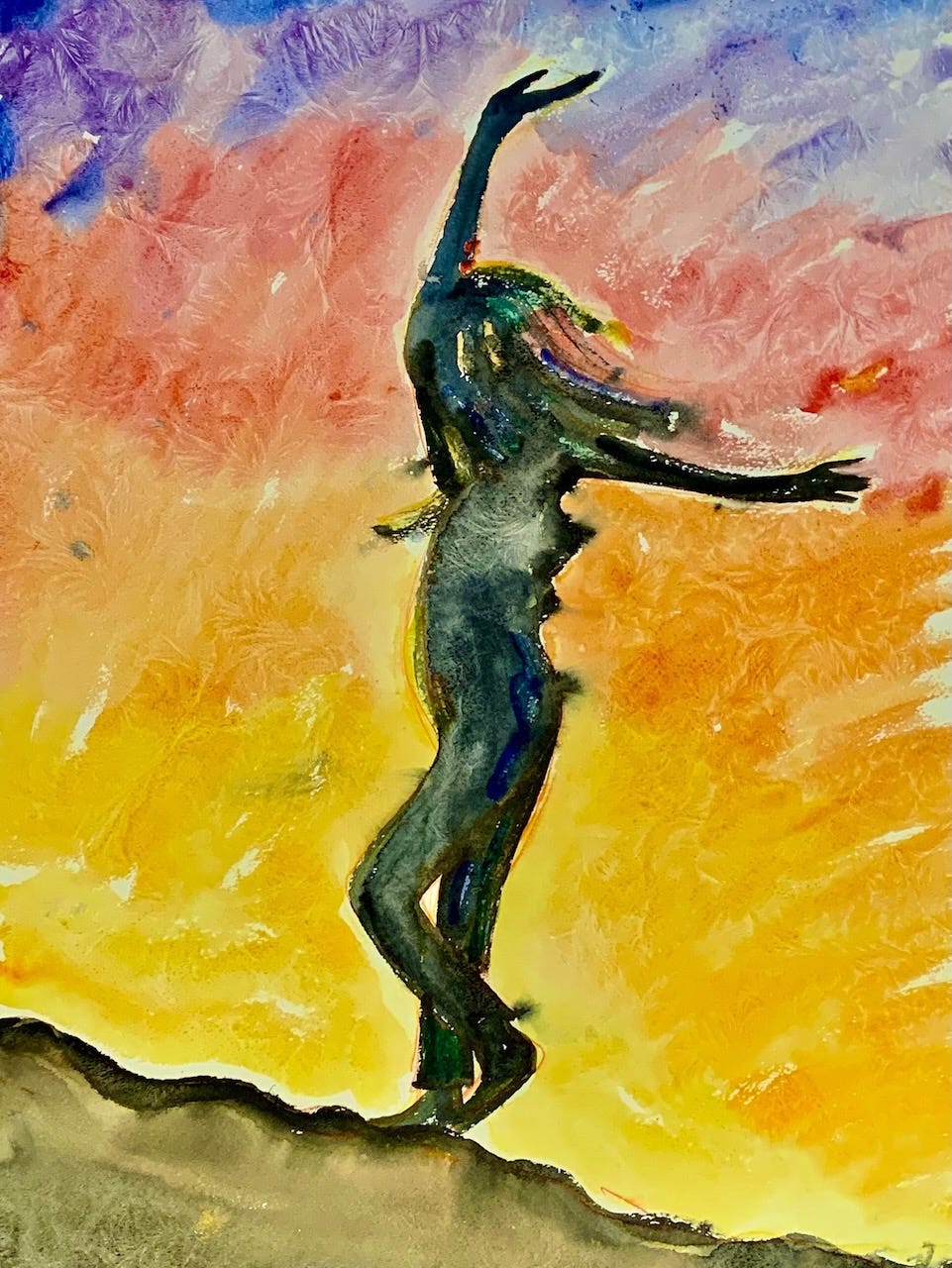
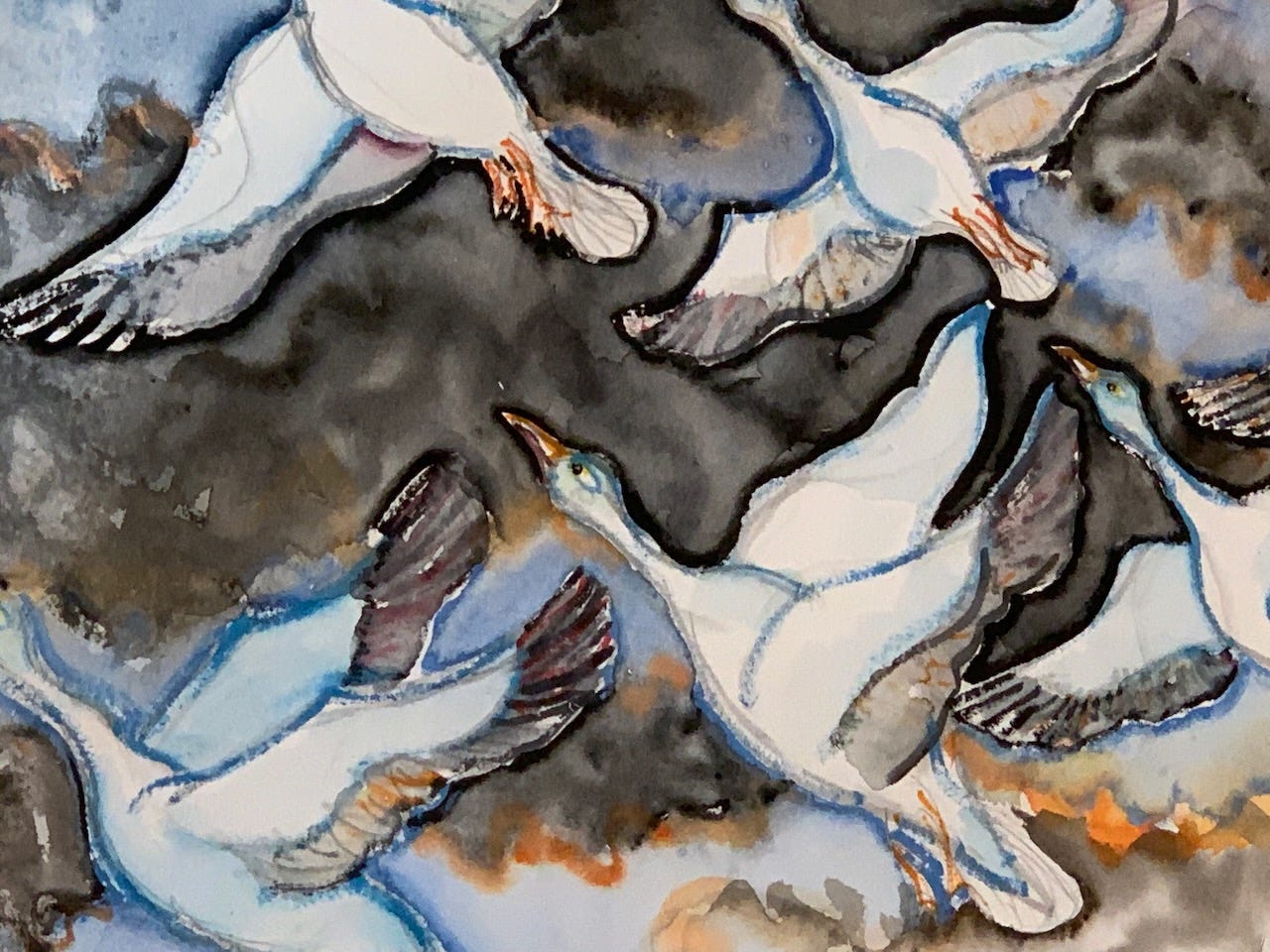
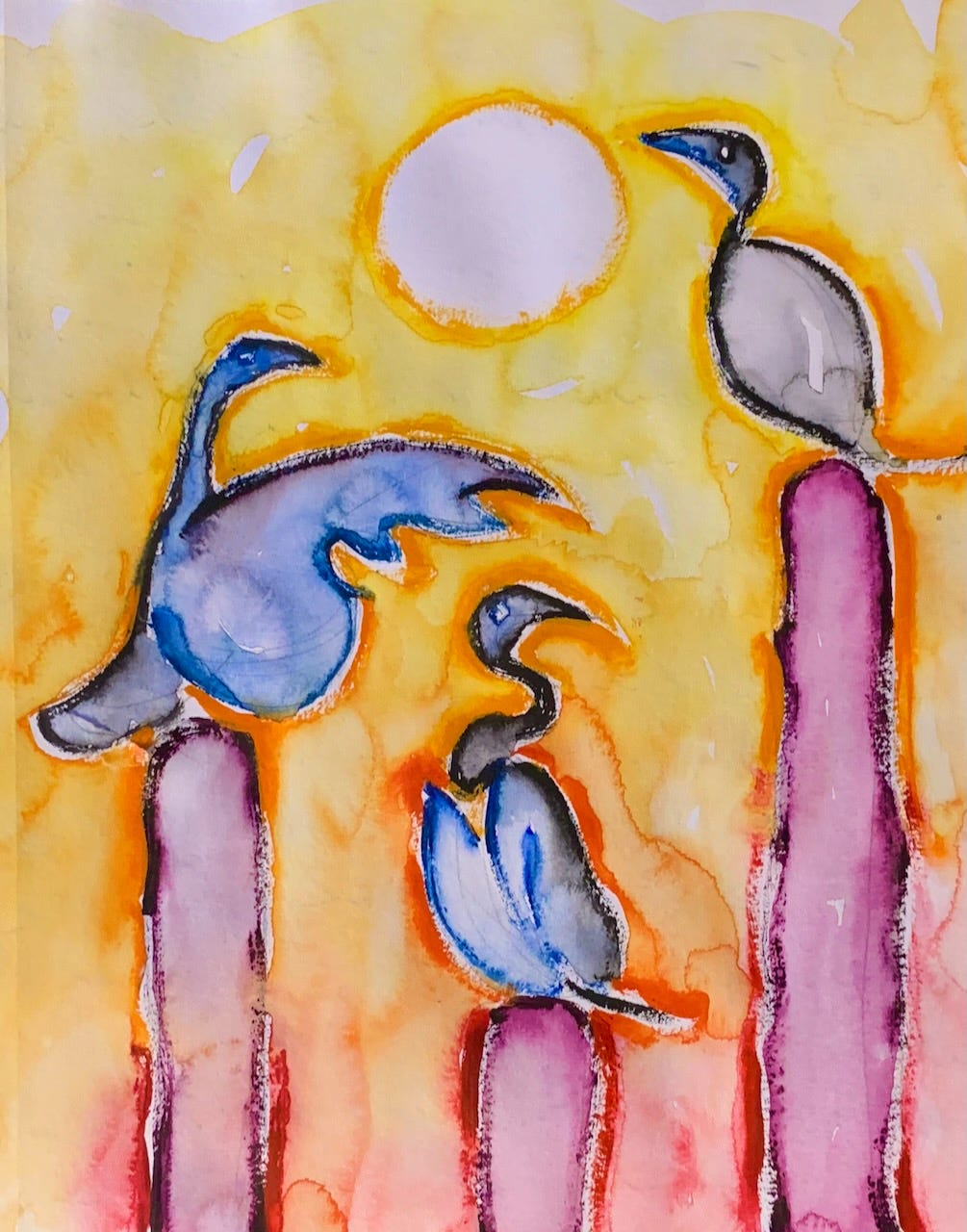
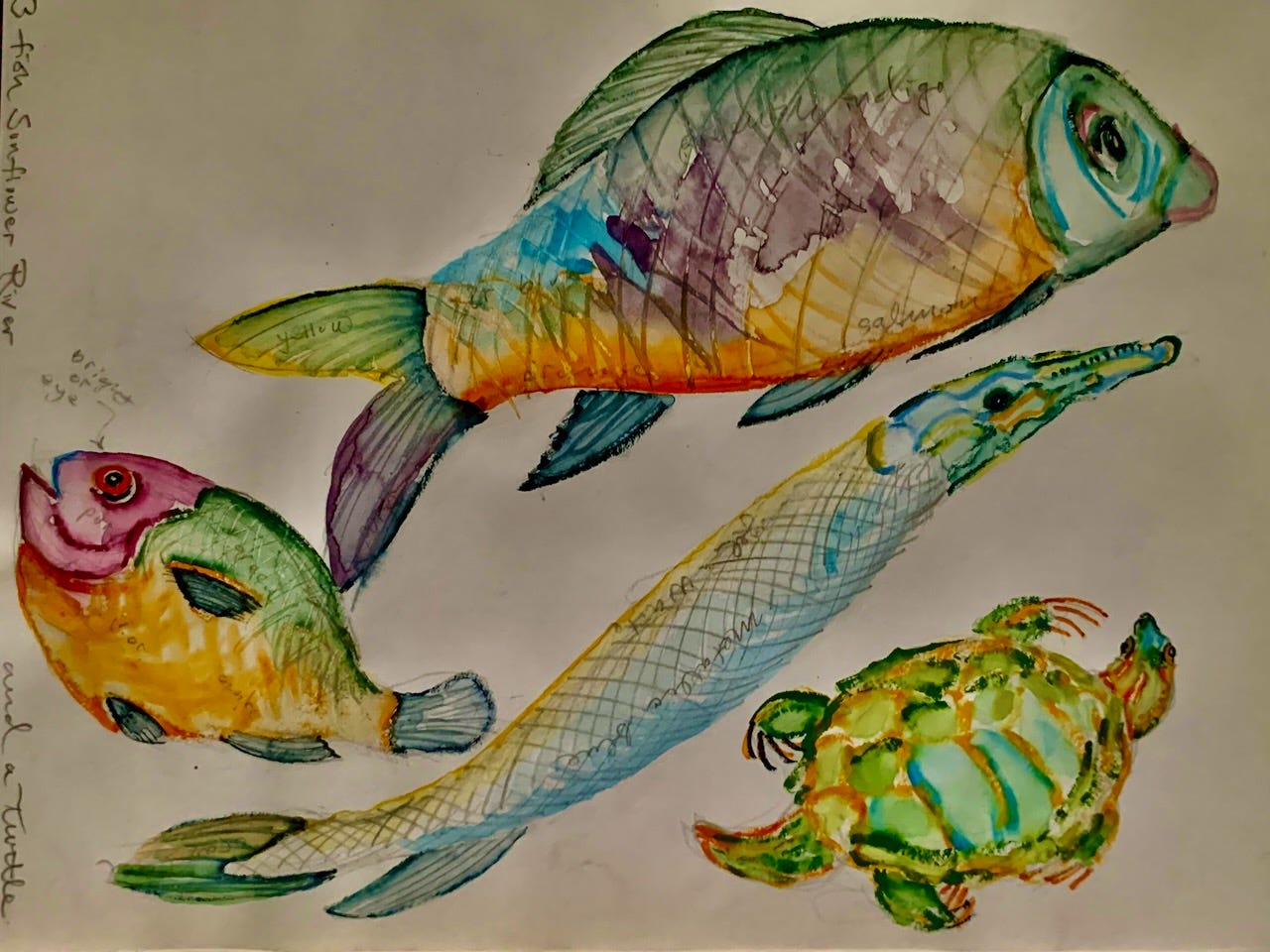
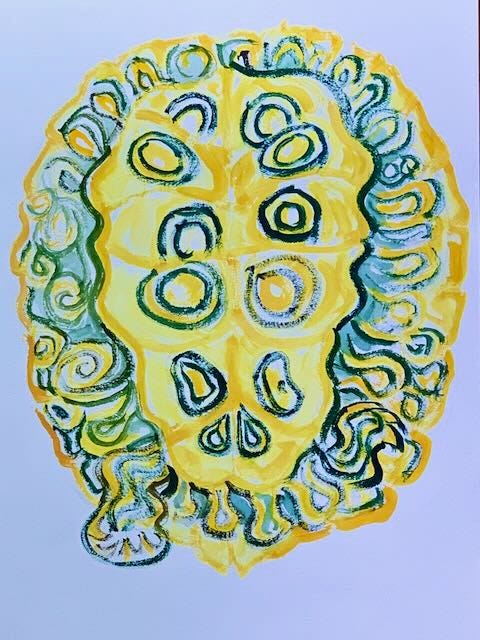
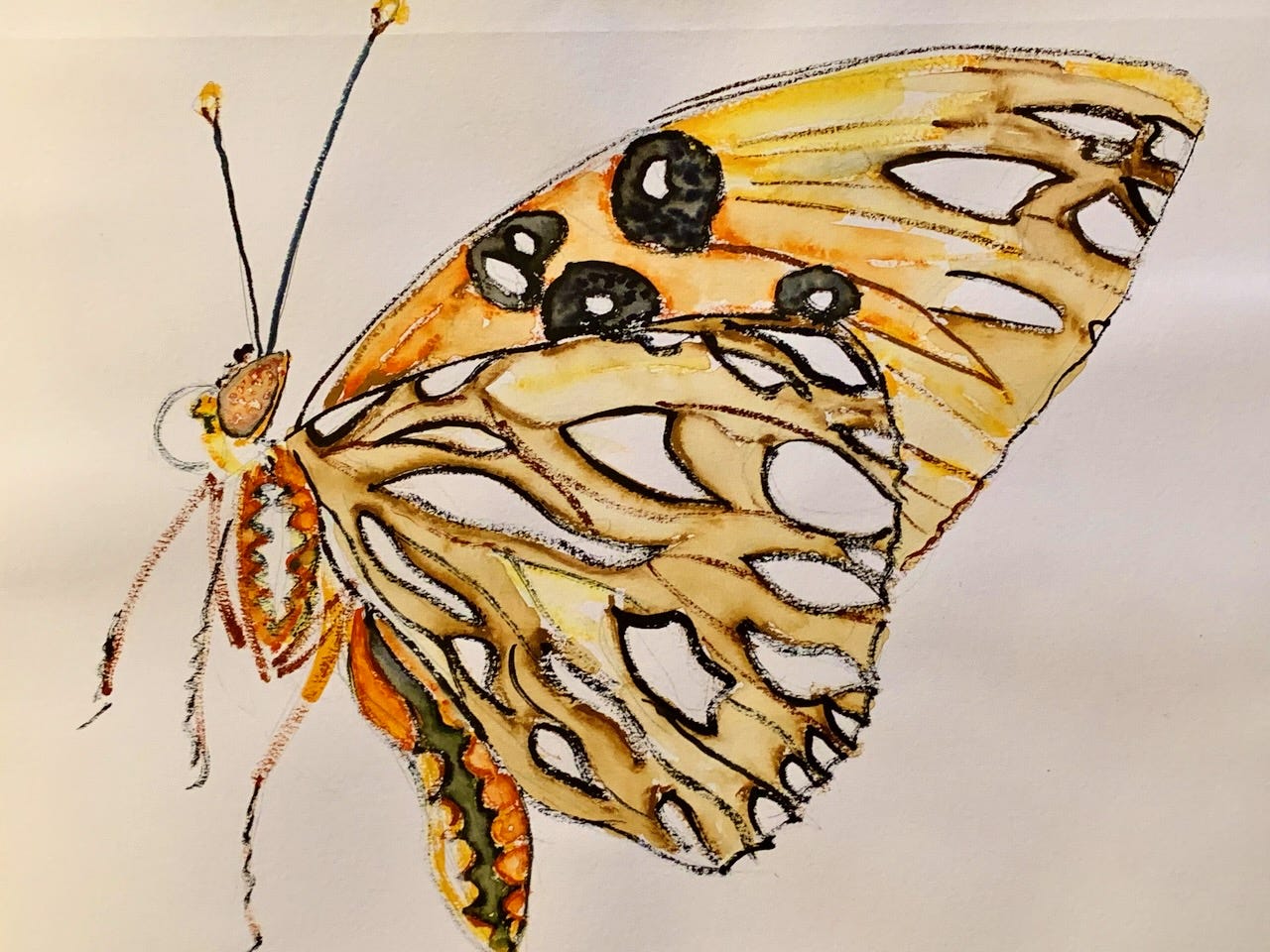
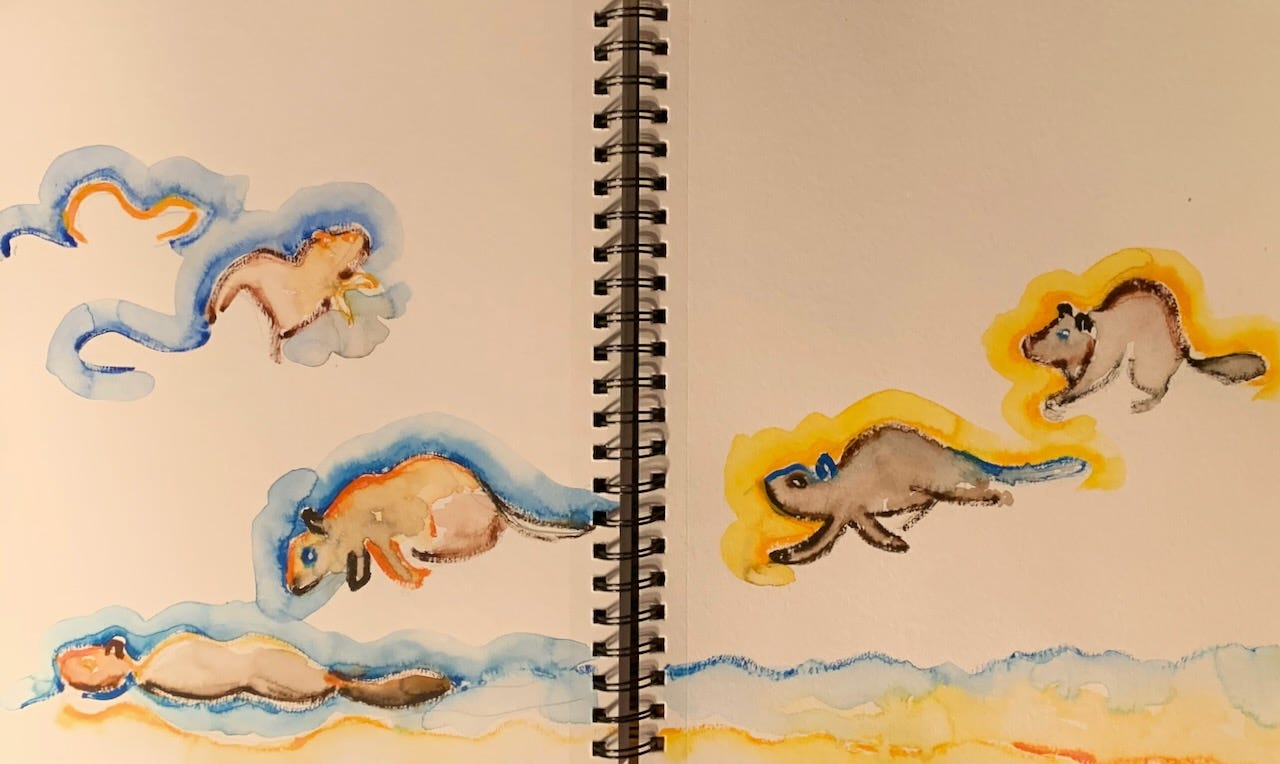
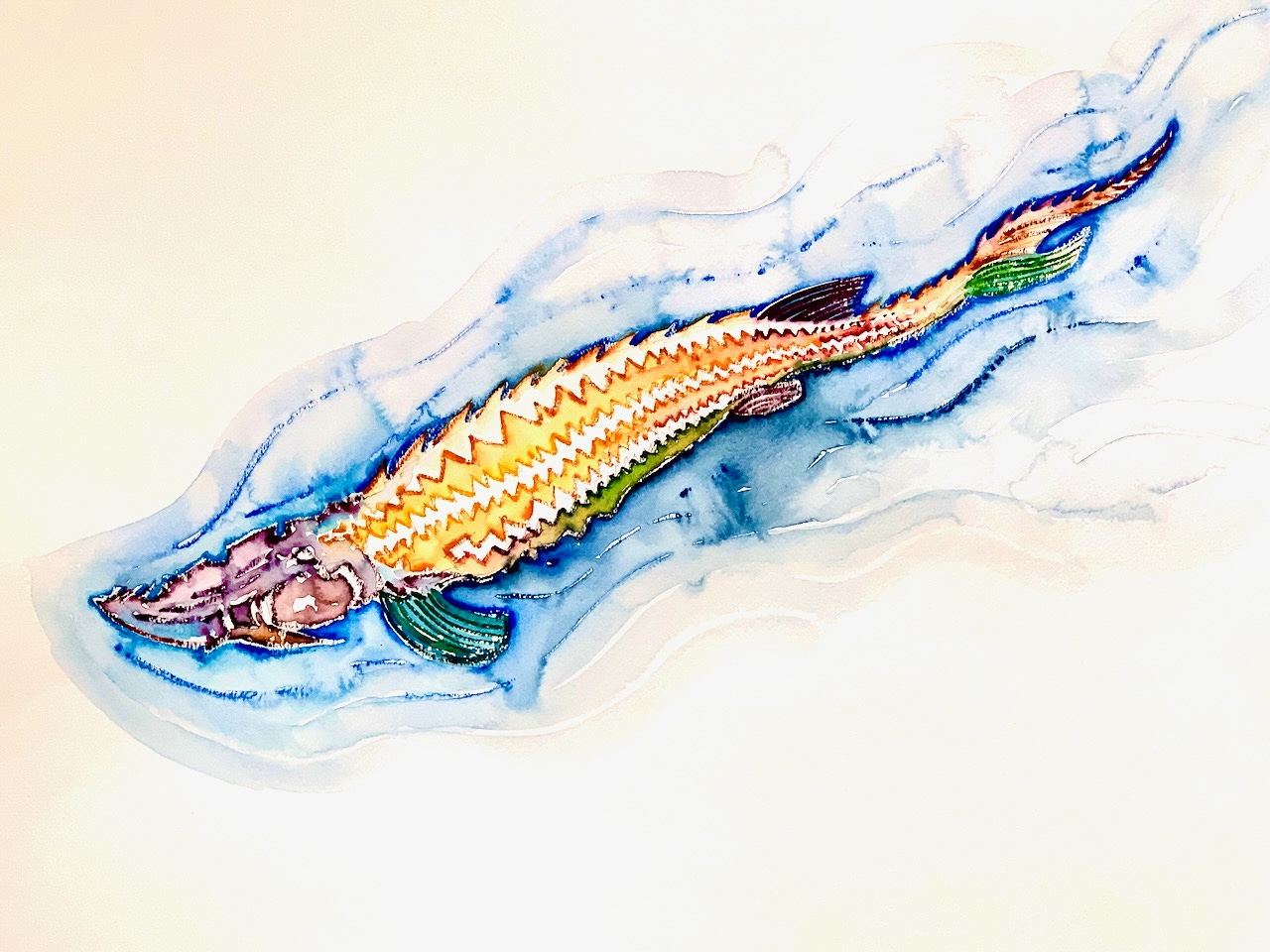
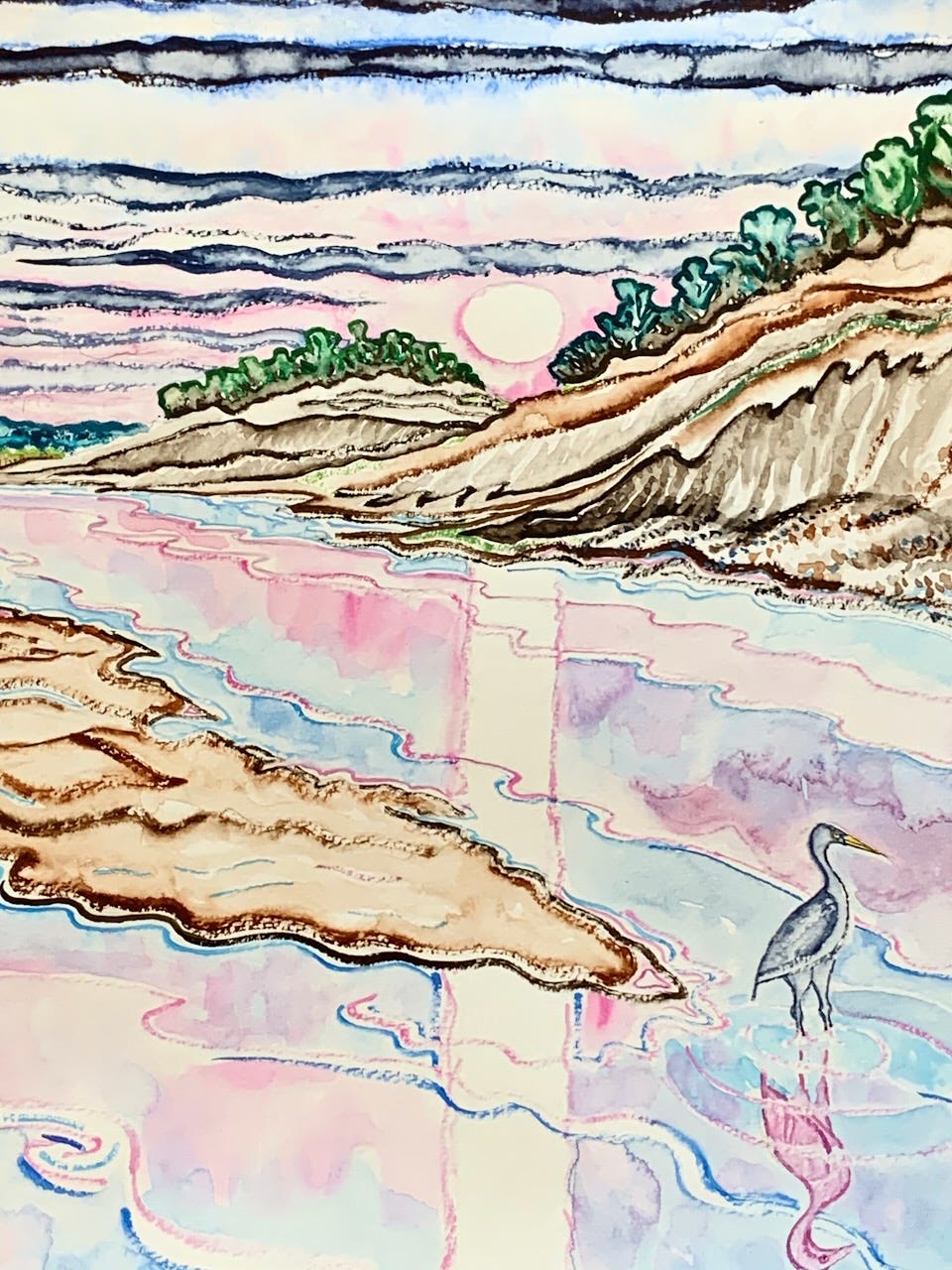
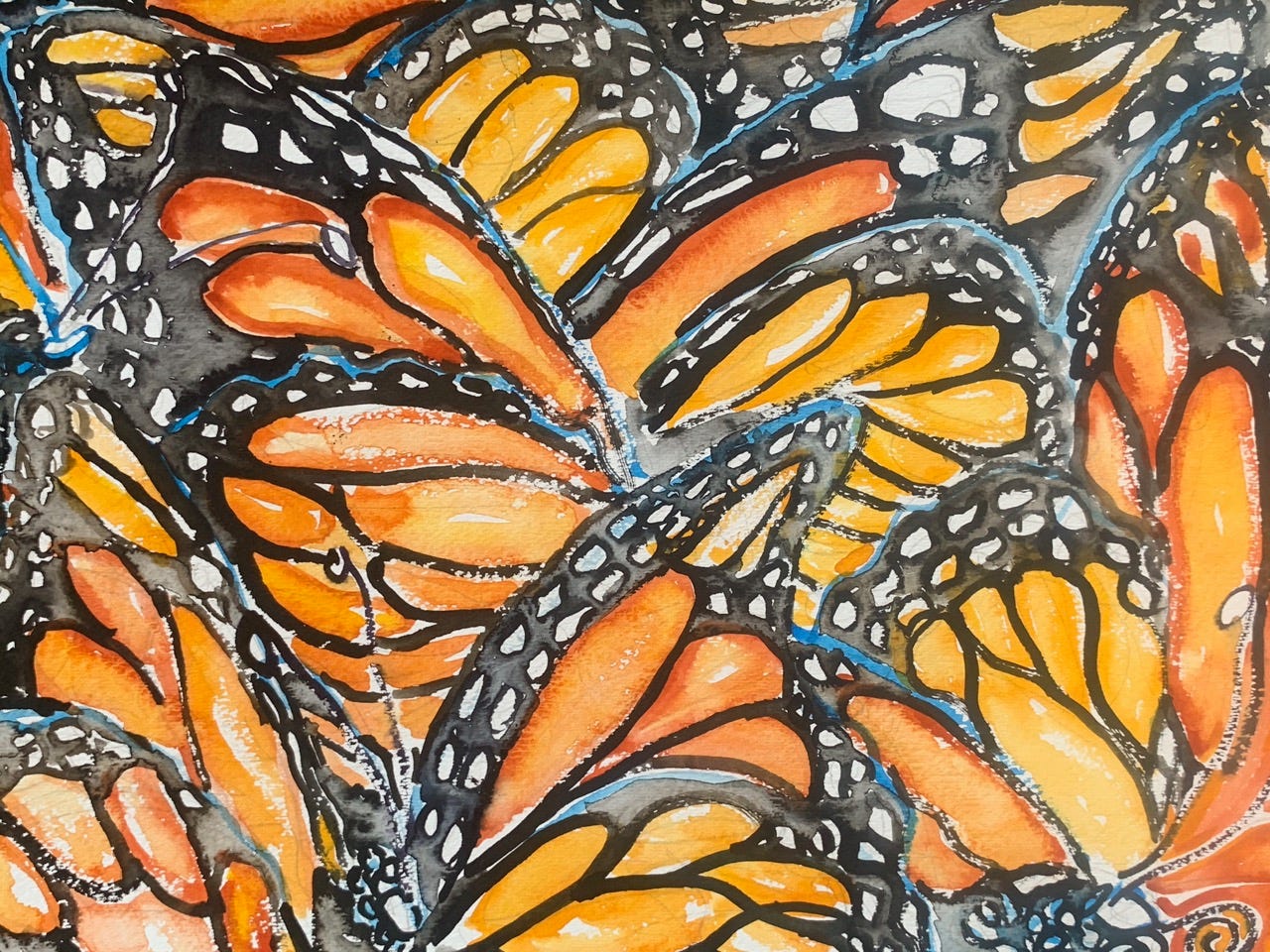
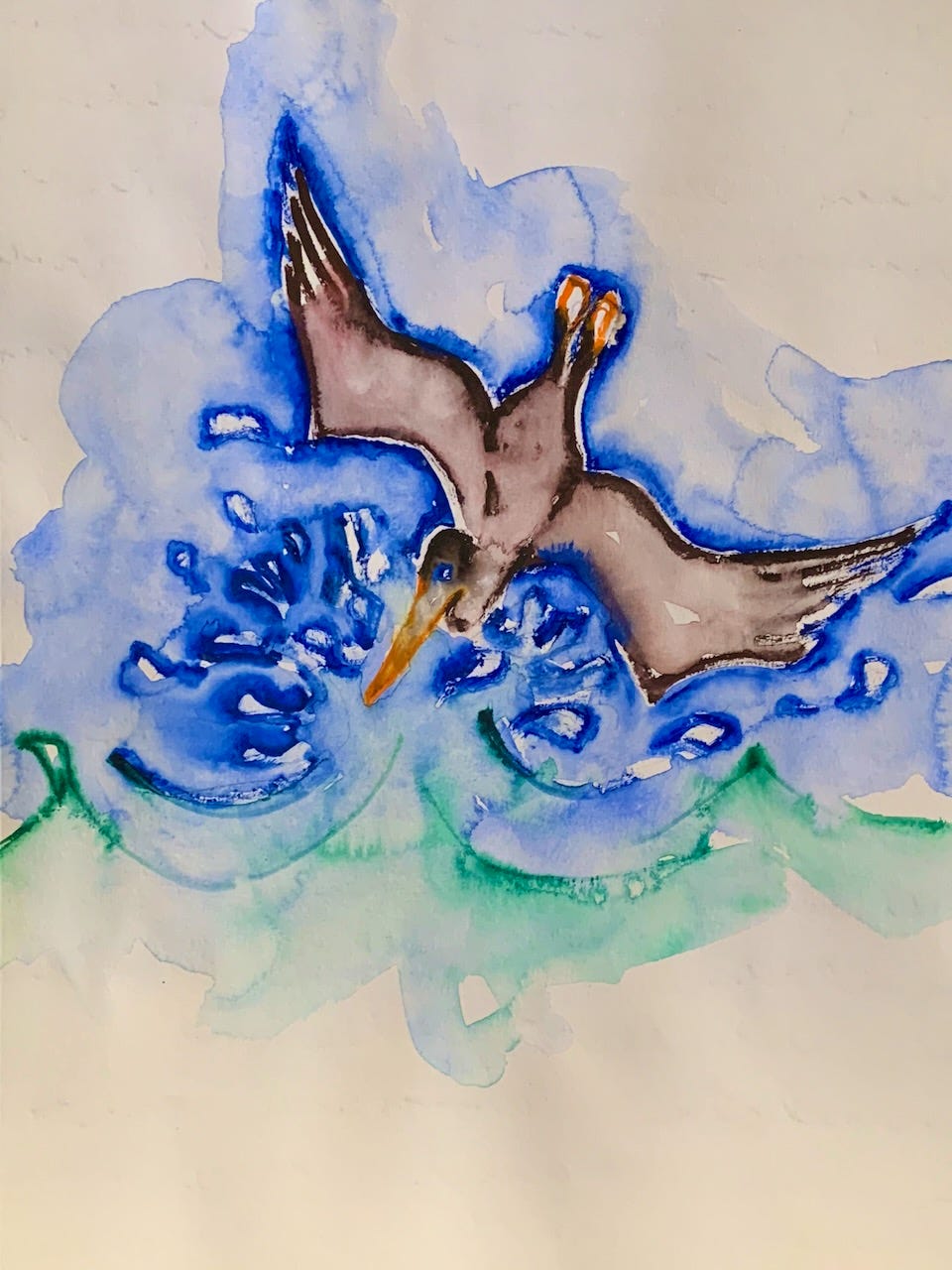


Dear Mighty Quapaws, many thanks for all your writings, paintings, photographs and paddlings and teachings to us all. You are all manifesting the love of the Goddess Ganga, the Mother Mississippi, Mother of Our Waters, which all flow to the Mother Oceans, Breath of Our World, and our Beloved Mother Earth. Your actions of love and reaching out are so important and obviously received with open arms in the communities you serve. May your community ever grow, your love is Refulgente, thank you all!🙏❤️ Please Mother, Beloved Creator, Bless the Mighty Quapaws, All the People and our Mother Rivers, we all need you so much, yaho…all my love Jen